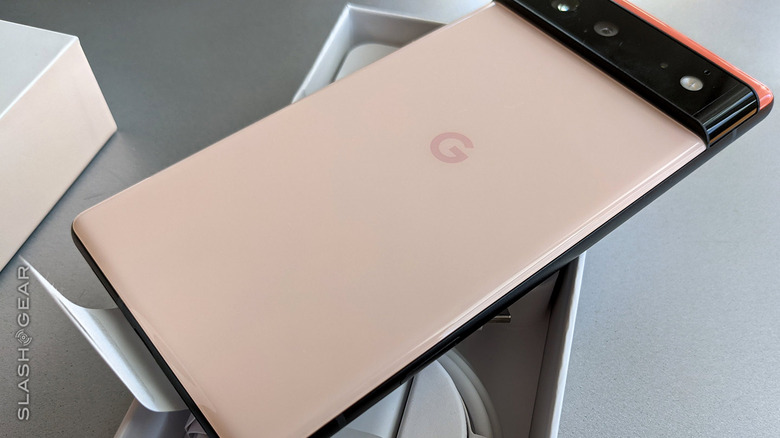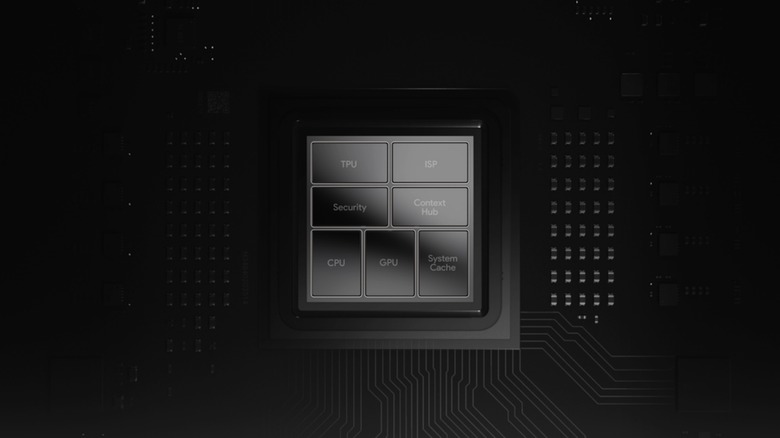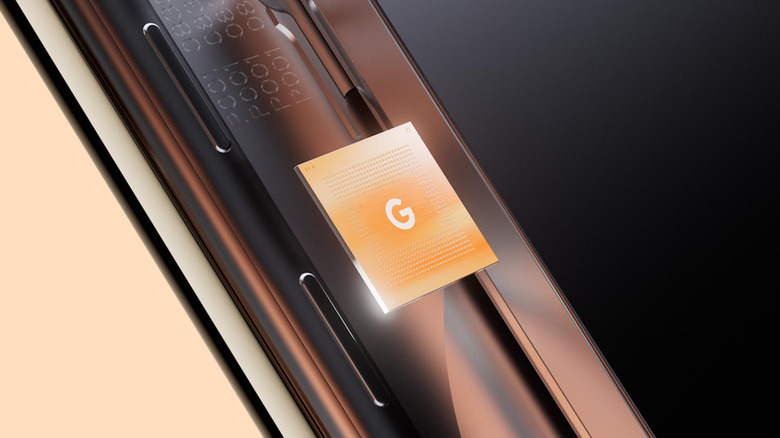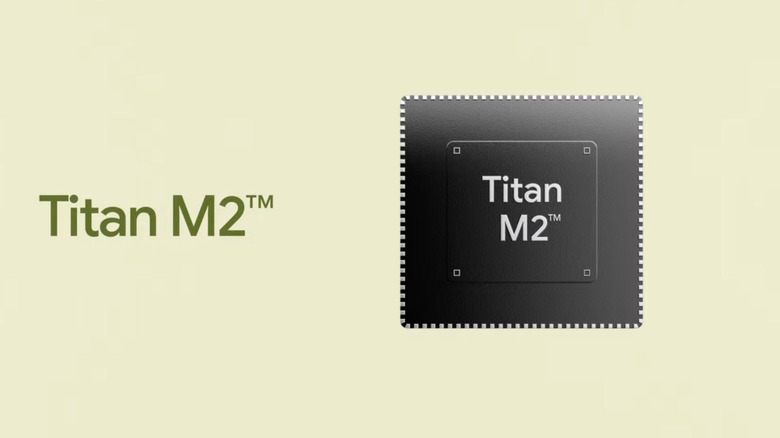Why Google's Tensor Is A Huge Deal For Android's Future
The Pixel 6, particularly the Pixel 6 Pro, has definitely piqued the interest of smartphone users on the Android side. More than just passing interest, too: Google has implied that high demand for the phones is causing shipment delays and supply problems. But, while Google is undoubtedly pleased by that turnout, its primary interest in the Pixel 6 is undoubtedly the shiny new processor that is the phone's beating heart.
While the Tensor chipset might sound like an unnecessary diversion for Google, it could very well drive how Pixel phones are developed moving forward. Even, to some extent, how Android itself could change in the future.
New way of computing
Google was never lacking in choice when it came to mobile processors. As demonstrated with the Pixel phones since 2016, Google could have opted to go with the high-end Snapdragon 8 series, the mid-range Snapdragon 7 line, or even MediaTek's innumerable Dimensity 5G chipsets. Designing its own processor, however, was more than just a show of technical prowess. It was a demonstration of a new way for phones and mobile operating systems to handle tasks, especially the heavier ones.

Unlike the common tri-cluster design that's being pushed by ARM and used by the likes of the Qualcomm Snapdragon 888 and Samsung Exynos 2100, Google opted to give the Tensor two "super" Cortex-X1 cores instead of one. It challenged the now-common convention of utilizing the "big" Cortex-A76 cores – which are a generation old, as if to prove a point – to the majority of the phone's workload, splitting it instead between the two Cortex-X1s. Google's argument there is that having short bursts of activity from these two cores is actually more efficient, compared to utilizing all three Cortex-A76 cores at full load for a slightly longer period of time.
If Google is proven correct, this could well shape the design of future ARM chips, either from ARM itself or from the likes of Qualcomm, Samsung, and MediaTek. There are even rumors of OPPO and maybe Xiaomi joining that bandwagon and developing their own processors that follow in the Tensor's footsteps. The promise of better power efficiency and lower heat generation is too good to pass up, especially as smartphones get more powerful and applications grow more demanding.

Privacy at the Core
Machine learning has undeniably become a key element in our lives, whether we realize it or not. Even on phones, the use of machine learning models and AI have become advertising points for user interfaces and especially digital imaging. While most smartphone processors are powerful enough to handle the basics, there are times when they have to "phone home" in order to fetch data that has been processed on remote data centers.
This, of course, means that there is a risk involved in the transfer of data, especially when more sensitive information is being communicated over potentially unsecured channels. While that may have been Google's default method when it first brought the likes of the Google Assistant to phones, there's little doubt it was also fully aware that, long-term at least, that wouldn't be feasible either technically or from a privacy standpoint. As a result, it's been working towards leaving all the AI-related processes inside the phone, and the Google Tensor is what makes that truly possible.

The Pixel 6 is full of examples of how machine learning and AI can define the mobile experience, from on-the-fly translation of text and audio, to removing photobombers from your images. More than just the end result, however, the process of accomplishing those features is just as noteworthy, not least because they all happen on the device itself, with – for the most part – no data leaked to the cloud.
Pulling this off didn't just require a more powerful processor but also a more novel "heterogeneous computing" model, that puts all the parts of the processor to use on a task, regardless if it's about editing out unwanted obstacles in photos or trying to make sense of a new language.
Security Measures
Tensor isn't Google's first custom chip to go inside a Pixel phone, mind. The Pixel 3, in fact, debuted with Google's Titan M, a separate processor dedicated solely to security. The next-gen Titan M2 also made its way to the Pixel 6 this year, but the difference is that it has more resources available for it to use.

The Titan M2 itself has been upgraded, but it also works in tandem with the Google Tensor's Security Core. Often, Android is portrayed as a less secure platform compared to Apple's iOS, and Google is working hard to change that image, both in software and especially in hardware. Of course, even this security aspect is driven by machine learning models, once again pulling its power from the Tensor's capabilities in addition to the Titan M's.
Final Thoughts
In some ways, the Google Tensor will be seen as the company trying to follow in Apple's footsteps once again. While arguably one of the motivations for its creation, it is also an overly simplistic view of the matter. It marks a new chapter in Google's own smartphone line, but it could also indirectly affect the Android phones of the future.
Phone manufacturers are starting to get interested in designing and putting their own silicon inside their devices, but not all of them might have years of experience and knowledge in that area. The Google Tensor not only demonstrates a slightly different way of doing a System-on-Chip, but could also inspire others to think outside the box. As smartphones get more complicated, that might be just what the industry needs, especially if it will be focused on machine learning technologies that have to be safeguarded inside smartphones themselves.
